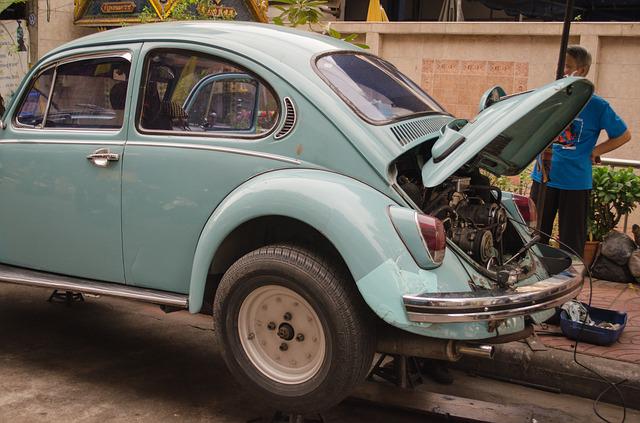Stuck Brake Callipers: A Guide To Help You Get Rid Of It
Find Used Engines and Transmissions for a Great Price! Live Assistant For Used Engines Call 1800-518-9776

The braking system is crucial for your car's safety. Particularly important parts for stopping your car's motion include the brake callipers, which press the brake pads onto the rotors. The performance and safety of your car may be jeopardised if your brake callipers become jammed over time. In this thorough article, we'll examine the reasons why brake callipers get stuck as well as how to spot the issue and fix it.
Causes of stuck brake callipers
-
Corrosion: One of the main reasons brake callipers get caught is corrosion. The calliper's sliding pins or pistons may rust and become unable to move as a result of moisture and salt from the road.
-
Debris and Dirt: Accumulated dirt and debris can also make it difficult for calliper parts to operate smoothly, which can lead to a jam.
-
Seized Calliper Slide Pins: The calliper can move freely thanks to the calliper slide pins. The calliper may become stuck if these pins seize because of a lack of lubrication or pollution.
-
Expired Seals: The rubber seals inside the calliper might wear out over time, enabling pollutants to enter and perhaps causing the calliper to seize.
What are the signs of stuck brake callipers?
Various signs suggest that the brake callipers are stuck. Below is a list of these signals.
-
Visible damage: This is the simplest signal; you can literally look at the damage; it is that visible. The brake calliper might be sticking out or showing some signs of damage.
-
Fuel efficiency is reduced: Rolling resistance increases with stuck callipers; this makes the engine work harder, resulting in reduced fuel efficiency.
-
Uneven braking: A stuck brake calliper might not be able to apply even pressure on the brake pad, resulting in uneven braking. Your vehicle might pull to one side on the application of brakes in such a condition.
-
Overheating: Overheated brakes can be a result of stuck brake callipers, which cause a lot of friction. This can further lead to brake fluid boiling, a reduction in brake efficiency, and even brake fade.
How do I resolve the issue?
Resolving stuck brake callipers is important, as brakes are a crucial part of an automobile and shoulder the responsibility of stopping the vehicle before it crashes into something. Here is a list of suggestions for you to follow during this time.
-
Ensure safety: Before you attempt anything on your car, make sure that it is well parked on a level surface and that the parking brake is in use. Ensure you have the required safety gear, gloves, and masks on.
-
Diagnosis of the issue: When it comes to identifying the damaged brake calliper, you can take a small test. Drive your car for a while and then touch the wheels; the hotter one is the damaged one.
-
Securing the vehicle: Using a jack, lift your vehicle and ensure that it is balanced. This will not allow the vehicle to move during repair.
-
Removing the wheels: Once the vehicle's safety is ensured, remove the vehicle to access the brake components of the car.
-
Inspection of the callipers: It is now time for you to inspect the callipers for damages and faults that were the reason behind the troubles you were experiencing.
-
Removing the callipers: Try lightly pressing the calliper with a rubber mallet to release it if you think corrosion or debris is what's keeping it stuck. Avoid damaging the brake calliper or other parts of the brake system.
-
Cleaning and lubrication: If after all this, the calliper feels stuck, then remove it and clean it thoroughly. Grease it with calliper grease and ensure that the calliper piston is in smooth motion.
-
Replace damaged parts: If there are broken parts, like the seal or boots, then it's better to replace them. Rebuilding callipers can be done with the kits available, but it is advised to replace the whole callipers.
-
Bleed the braking system: After the examination and repair are done, make sure you bleed the brake system so that no air or disparities are left behind.
-
Re-assemble and test for inconsistencies: Once everything is assembled and the car is ready, take it for a drive. Be vigilant for any sort of noise or if the car is pulling to one side on the application of brakes.
Conclusion
Although stuck brake callipers might be annoying, you can fix the problem and get your car's braking system back to normal operation with the correct knowledge and some elbow grease. Regular upkeep and preventive inspections can help avoid brake issues altogether, ensuring that your car is always trustworthy and safe to drive.
You can meet all of your used engine and gearbox needs at Used Engines . For the customer's enjoyment and peace of mind, we offer products and services of standard quality.
related
You May Also Like

Which BMW Has the Most Horsepower?
A car is useless if it doesn’t have good horsepower. Just imagine driving your car with sluggish acceleration and it drags on the road whenever you take it for a spin.
Read Article
10 Best Engines Made So Far By Top Engine Manufacturers
Over the years, the car industry has seen major changes. Car engines have become smarter and it looks like every new engine that rolls out is better than the other.
Read Article
How to Make Your Car Last Forever?
Isn’t it lovely when a new car works the way you want? The gears shift smoothly and the wheels roll without dragging against the road. But as your car gets older, you’ll notice that it doesn’t drive smoothly, has lower fuel mileage, and overheats easily.
Read Article